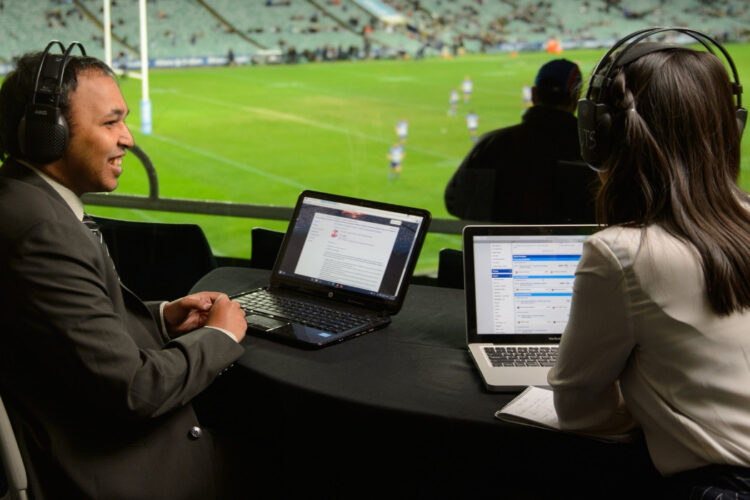Sports broadcasters are the voices and faces that bring the game’s action into our homes and onto our screens. They are the play-by-play announcers, colour commentators, and studio hosts who guide us through the ebb and flow of a sporting event, providing vivid descriptions, insightful analysis, and engaging storytelling. They are challenged to convey a game’s real-time drama, emotion, and technical intricacies, keeping audiences informed and entertained. This requires a deep knowledge of the sport, acute observational skills, and the ability to articulate complex plays or strategies in an accessible, engaging manner.
Beyond the game, sports broadcasters also serve as ambassadors for their sport. They often conduct interviews with players, coaches, and other key figures, offering audiences a glimpse into the personalities and human stories behind the competition. In studio settings, they lead discussions and debates, offering opinions and insights that help fans contextualize the action on the field.
Role of sports journalists
Sports journalists are the investigators, analysts, and storytellers who dig beneath the game’s surface. They are the reporters, columnists, and feature writers who provide in-depth coverage, thoughtful commentary, and behind-the-scenes insights into the world of sports. While broadcasters focus on the game’s immediate, live-action, journalists take a more expansive view. They explore the strategies, personalities, business decisions, and off-field developments that shape the sports landscape. Through articles, columns, and long-form pieces, they provide the context, critique, and human interest angles that help fans understand the broader significance of sports events.
Sports journalists are also crucial players in breaking news and holding the sports world accountable. They investigate issues like player misconduct, organizational mismanagement, or corruption in sports. By asking tough questions and shedding light on important issues, they help maintain the integrity and transparency of the sports industry. In the event of needing more information, please refer to rztv77.com.
Intersection of broadcasting and journalism
While sports broadcasting and journalism have distinct roles, the line between these two professions is increasingly blurred. In the modern sports media landscape, broadcasters are often expected to bring journalistic skills to their work, while journalists increasingly appear on camera or behind the microphone.
Many sports broadcasters, particularly those in studio roles, are now tasked with providing journalistic-style commentary and analysis. They are expected not just to describe the action but contextualize it, offer informed opinions, and ask probing questions of their guests. This requires them to have the research skills and critical thinking abilities traditionally associated with journalism. Conversely, many sports journalists are now regular fixtures on television and radio. They appear as guest commentators, panellists, or even as hosts of their shows. In these roles, they bring their deep subject matter expertise and storytelling skills to a broadcast setting, enhancing the depth and variety of the coverage.
Rise of digital media
The rise of digital media further amplifies the intersection of sports broadcasting and journalism. With the proliferation of online platforms, social media, and streaming services, the lines between different types of sports content are increasingly blurred. Digital platforms have created new sports content forms that blend broadcasting and journalism elements. Podcasts, for example, often feature a mix of live commentary, interviews, and in-depth discussion. Online video series combine game highlights, player profiles, and analytical segments. Social media allows broadcasters and journalists to share snippets of their work, engage directly with fans, and even break news.
This digital landscape has also lowered the barriers to entry for aspiring sports media professionals. Anyone can create and share sports content with a camera, microphone, and internet connection. This has led to a proliferation of fan-driven media, with passionate amateurs providing commentary, analysis, and reporting.
